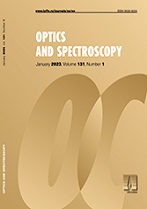| Optics and Spectroscopy |
|
|


|
|
|
This article is cited in 7 scientific papers (total in 7 papers) Extremely strong fields and ultrashort optical pulses Generation of an attosecond pulse in helium excited by half-cycle X-ray pulses R. M. Arkhipovabc, M. V. Arkhipovab, I. Babushkinde, A. V. Pakhomovb, N. N. Rosanovbc a Saint Petersburg State University b St. Petersburg National Research University of Information Technologies, Mechanics and Optics c Ioffe Institute, St. Petersburg d Institute of Quantum Optics, Leibniz University of Hannover, Hannover, Germany e Cluster of Excellence PhoenixD (Photonics, Optics, and Engineering-Innovation across Disciplines), Hannover, Germany
This publication is cited in the following 7 articles:
|


|
||||||||||||||||||||||||||||||||||||||||||||||||||||||||||

|
 Contact us:
Contact us: |
 Terms of Use Terms of Use
|
 Registration to the website Registration to the website |
 Logotypes Logotypes |
|










 Citation in format
Citation in format 